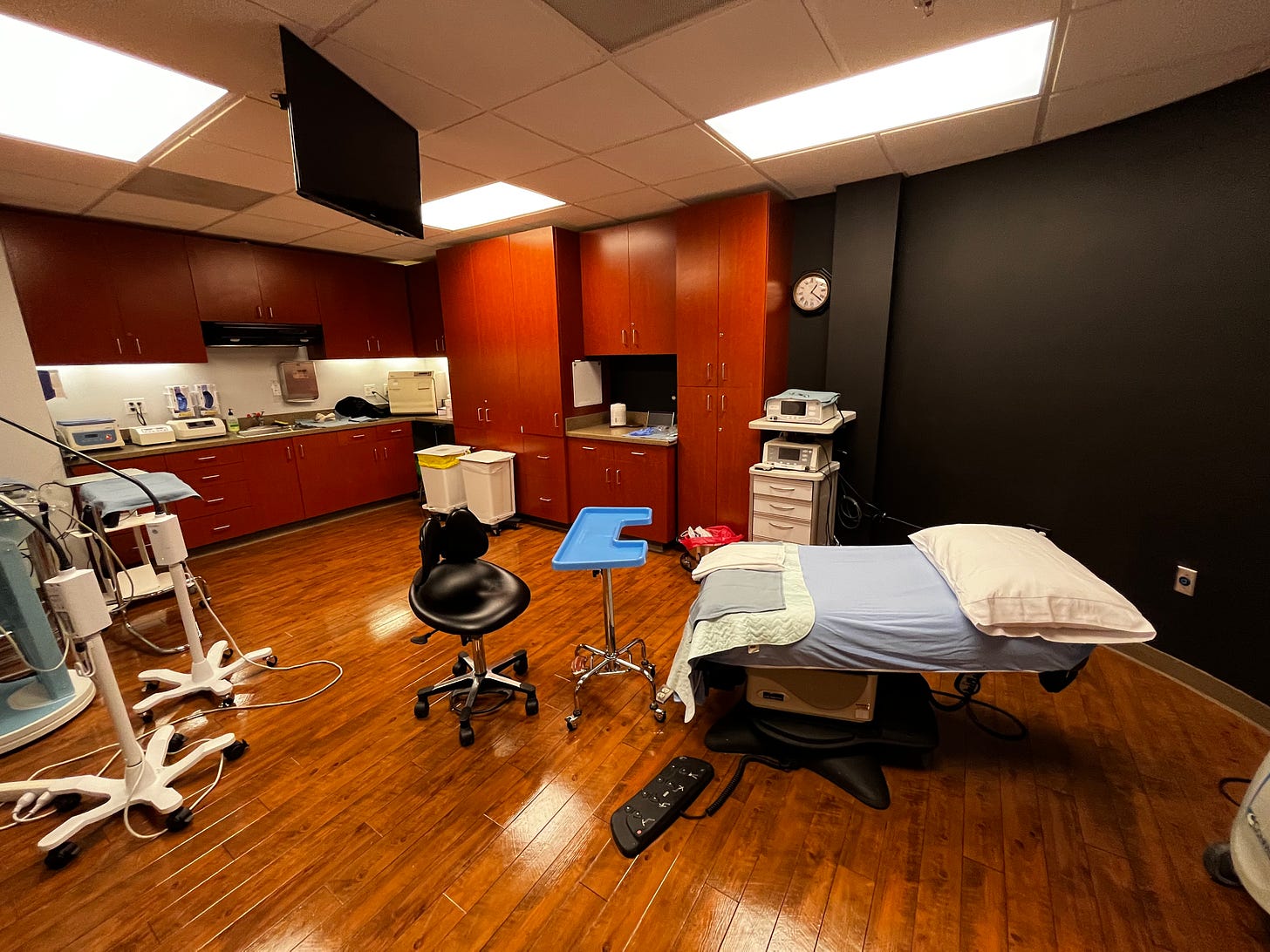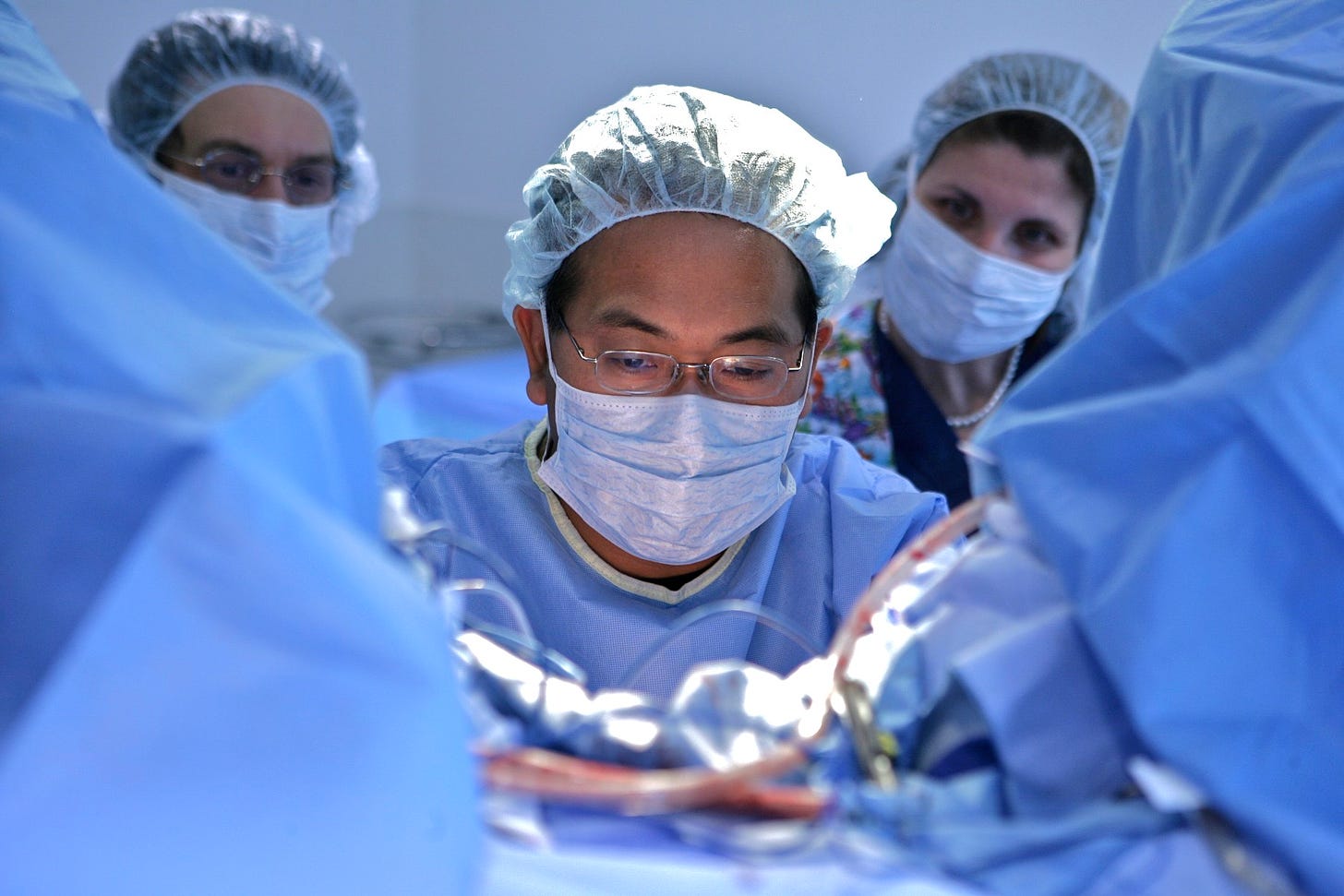FAQs: Frequently Asked Questions about Aesthetic Vulvovaginal Surgery
The questions we get asked daily
FAQs about Aesthetic Vulvovaginal Surgery
I put together this summary of common questions I get daily. I hope you find it
helpful. Use it as a template when you visit doctors and then ask them these
questions. You can also download my Patient Brochure and have many of your
questions answered.
Happy hunting!
What is Aesthetic Vaginal Surgery?
The term Aesthetic Vaginal Surgery is also known by other names such as
Vaginal Rejuvenation, Laser Vaginal Rejuvenation, Labiaplasty, Vaginoplasty,
Designer Laser Vaginoplasty, Perineoplasty, and Hymenoplasty. Aesthetic
Vaginal Surgery is a broad term that includes the individual procedures. Since it
is a rather new field dealing with the appearance and function of a woman’s
private parts the terminology has not been standardized. In simple terms,
Aesthetic Vaginal Surgery and its many names deal with cosmetic surgery of the
vulvar and vaginal region. It is cosmetic surgery of the “Private Parts.”
Why is vaginal correction important?
Surgery to improve the appearance and function of a woman’s vaginal tissues is
important for both personal esteem and physiologic function. Childbirth is often
traumatic resulting in lacerations and healing process that is not personally
satisfying. The use of forceps or vacuum assisted delivery and the increasing
weight of babies today result in more prolepses of pelvic organs, more
incontinence, and more looseness of vaginal tissues or unappealing appearance
of labial tissue. Many who have finished their childbearing years are now
concerned about their personal appearance and are looking for ways to deal with
this problem. Some feel that they have lost a great deal of sexual sensation due
to “loosenes” of the vagina. This often results in reduced self esteem and confidence.
Who does Aesthetic Vaginal Surgery?
Gynecologists, urogynecologists, and a few plastic surgeons do most of these
types of surgeries. Gynecologists are trained specifically in repair of fallen
bladders and rectums, fallen uterus or vagina, and repairing tears in the vaginal
region as part of their everyday work. Urogynecologists usually are highly
subspecialized and focus primarily on the worst incontinence and pelvic organ
prolapses encountered. Plastic surgeons are generally trained in cosmetic
surgery on men and women and very few are trained in vaginal surgery. Some
plastic surgeons are highly trained in totally reconstructing new vaginas in
transsexuals, transvestites, and pelvic cancer patients. With experience and
training all specialties mentioned above can perform aesthetic vaginal surgery.
Is the use of Lasers important?
The laser is an important surgical tool that has many advantages. Certain lasers
are very precise and are used as scalpels. Some lasers are ablative
(destructive) and used more to destroy abnormal tissue or to resurface the skin.
Many dermatologist and plastic surgeons use this type of laser. However, there
is no magic in the use of lasers. In fact, other modalities such as radiofrequency
cautery units can give more precise cuts and less tissue destruction by a factor of
ten or more. Other surgeons will avoid electrical units altogether and use highly
precise scissors or scalpel units. Another way to look at lasers is to realize that it
is a tool in the doctor’s bag but that it is not ultimately any better than a cold
knife. However, it is undeniable that using the term “laser” adds glamour and a
sense of prestige to a procedure.
What is the procedure like?
Almost all of the cosmetic surgeries are outpatient. Labiaplasty and vaginoplasty
cases are typically finished within a few hours. They are almost always outpatient.
Placement of a sling to help with incontinence does not prolong the hospital stay.
Many patients feel the pain involved is similar to the discomfort AFTER a baby has
been born. They are somewhat sore but not in agony. Pain control is excellent in the
large majority of cases.
What and how are the actual procedures done?
Labiaplasty is the cosmetic reshaping of the inner folds of tissue, called the labia
minora, or smaller inner lips of the vagina. Various instruments are used such as
pinpoint cautery, Yag lasers, fine scissors, or a knife. The edges are then sewn
together with delicate absorbable sutures. A vaginoplasty (commonly referred to
as vaginal rejuvenation) is when a diamond shaped section of tissue is excised
from the inside of the vagina and brought down to the outside of the vagina.
Often times a small triangular area is also excised from the perineum (the area
right below the vaginal opening). This is called a perineoplasty or
perineorrhaphy. The size of the tissues removed rarely are larger than a domino
block. If needed, sutures that bundle loose muscles together are used to narrow
the vaginal opening. At the very end of the procedure, a CO2 laser may be used
to smooth out any skin irregularities and further tighten the vaginal opening. The
laser provides for growth of new, softer, smoother , and tighter skin just as it
would when used on a face.
What does surgery actually do to me physically?
Surgery can trim excessively large labia minora, it can also reduce a labia
majora. We can also trim the excess bulge of skin in the vagina and tighten the
entrance to the vagina. We can make the whole vagina tighter by excising this
loose vaginal skin. Surgery alone will not improve the tone of your vaginal
muscles. You may need pelvic floor exercising for that similar to Kegel’s exercises.
Surgery can also add support to your fallen bladder, rectum, bowel, or vagina.
This is a highly specialized skill very few surgeons perform. Again, in some instances
lasers are used to smoothen out wrinkled vaginal skin to make it new and young
looking again. Many women tell us that they are happy to be able to wear jeans,
bathing suits, and form-fitting outfits again because the rubbing and irritation have
disappeared.
Where is the procedure done?
The procedure is usually done in our office under local anesthesia in 99% of the
cases. We can also do them in the surgery center under general anesthesia. We
tailor the surgery to the patient’s projected pain tolerance, anxiety level, and health
status.
What type of anesthesia is used?
You can have a short nap or be fully awake. In the office we use pills and shots and
local anesthesia in the large majority of the cases. Very safe, comfortable and
efficient. General anesthesia is the most common anesthetic used because of the
patient’s desire not to know or feel anything. Then there is the spinal or epidural
anesthetic that allows you to be awake. This is ideal for those who have a fear of
going to sleep or have other major medical problems. Sedation and use of local
anesthetics is the least invasive of anesthetic options. Many choose this so that
recovery is almost immediate and the down time is minimal. If the case involves
bladder, rectum, or bowel repair of if a hysterectomy is performed then general
anesthesia is the standard.
What are the logistics involved?
A patient interested in aesthetic vaginal surgery usually calls or emails us to set
up an initial appointment for evaluation. If at the time of evaluation the patient
and physician agree that surgery is the correct choice then a surgical date is
finalized. If the individual is an established patient then I will usually see her
within a week of surgery to perform a pre-op evaluation. They may also have
this pre-op evaluation with their primary care physician for surgical clearance.
This is where blood work, X-rays, EKGs are done if needed. The majority of the
time a simple blood count is all that is needed. For women who are from outside the
area and choose to fly in, we recommend using John Wayne International Airport. It is
about 30 minutes away from beautiful Laguna Beach where our office is located. One
trip to Southern California is all that is needed. We can arrange the initial examination
to be the day before planned surgery, do the surgery the next day, and go home the
day after in most cases. We want to evaluate your tolerance and response to surgery
before you fly off for home.
What are the advantages of having surgery in Laguna Beach?
We have some of the finest resort lodging available in California. The Ritz
Carlton, Waldorf Astoria Monarch Beach Resort, and Montage Resorts are within
minutes of our office. You can choose to have your recovery at one of these world-
class resorts with a home health nurse visiting you or even staying in an adjoining
room for total care. There are also many less expensive quality hotels in the area. If
you like the beach life then this is the place for you.
What are the advantages of having surgery by Dr. Alinsod?
Dr. Alinsod has performed beautiful aesthetic vaginal surgery for thousands of
women over the past 30 years. He has concentrated his skills in the art of
aesthetically pleasing vaginal repairs and has taught hundreds of gynecologists,
urogynecologist, and urologists. Fellow physicians, physician wives, nurses,
operating room technicians have sought out Dr. Alinsod to perform their
surgeries. Furthermore, Dr. Alinsod is always in the forefront of his field and
travels extensively to meet and discuss with other prominent surgeons what is
new and better for the patient. Dr. Alinsod truly cares for his patients and it is this
commitment to service that drives his entire team.
How do I get a consultation scheduled?
Call us at 877-4-UROGYN or 949-499-5311. You can also email us at
info@urogyn.org. We have office hours to meet you needs ranging from early 7
AM appointments to late 8 PM appointments on Tuesdays.
I live far away. Can I get an Internet consultation?
Yes. For the price of a co-pay, you can have Dr. Alinsod respond to your
questions in a personal and secure manner via his On-Line Consultations at
www.urogyn.org. He answers his emails usually on the same day. You can also
send unsecured email for general questions that are not patient specific. We do
this to protect an individual’s privacy.
What are the risks of surgery?
Anesthesia is a risk factor because of the very rare possibility of a reaction to
either the injected medication or inhaled agents. High temperatures and fevers
from “Malignant Hypertension” can occur. I have personally never seen this in 19
years of clinical practice. You can also aspirate food or fluid that can obstruct
your breathing tube or even cause a pneumonia. There is risk of infection of the
surgical site, there is a possibility of bleeding and hemorrhage and a need to
have a transfusion. With transfusions there is risk of HIV, Hepatitis, and perhaps
other unknown viruses. There is even the risk of death. If tissue or mesh
augmentation is needed then there is the risk of rejection of these grafts. Again,
these complications are exceptionally rare and the huge majority of cases go
quite smoothly. A risk you should also consider is one similar to “buyer’s
remorse” when one is not fully happy with the result of surgery. The risk of
having the surgery redone or amended is present but fortunately is very rare.
We will fully review the risks of surgery before the case is even scheduled and
give you every opportunity to have your questions answered.
What restrictions do I have after surgery?
We advise “Pelvic Rest” for six to eight weeks. This means nothing goes inside
the vagina, such as tampons or vibrators, and no sexual intercourse for the
length of time. The only thing allowed in the vagina is the applicator full of
estrogen cream we give you to aid in the healing process. We also recommend
loose clothing and no tight underwear, thongs, or jeans that may cause rubbing
and discomfort. We advice against lifting of objects or activities that can cause
you to strain or bear down. We do not want tension on our suture line nor do we
want to stretch tissues we have just tightened. Basically, treat yourself like a
princess during this healing phase.
How soon can I go back to work?
If you had a labiaplasty or vaginoplasty you can return to work or normal activity
within 4 days. If you had both a labiaplasty and vaginoplasty then it may take
you a whole week before you feel comfortable to go back to work. Much
depends on the type of work you do. For example, a woman who has a desk job
will return to work sooner than one who has to walk or run and carry objects from
place to place. We will need to individualize your return to work date. In any
event, you are usually healed by six weeks although complete healing takes up
to three months.
When can I resume sexual activities after surgery?
We recommend that you wait four to six weeks before resuming sexual
intercourse. If you had a vaginoplasty it is also recommended that some
stretching exercises of the surgical site start at six weeks to soften any scarring
that may occur and to make the sexual experience more comfortable after
surgery. This stretching exercise is not needed if you had a labiaplasty alone.
Can you talk about how surgery will affect my sex life?
There are many sites on the Internet that address the topic of sexual gratification
and surgeries that may enhance this experience. In summary, there is an
opinion that aging and the trauma of childbirth results in looseness of vaginal
tissue, weakening of vaginal muscles, and resultant decrease in friction, hence,
decreased sexual gratification for both men and women. Unfortunately, this topic
is much more complex than simply tightening a vagina to increase frictional
forces for both sexes. Surgery can indeed result in tightening of the vagina but
there is no guarantee that your sex life will be better or that your orgasms will be
more pronounced. You must weigh carefully the claims of an improved sexual
experience. Sexual response is multifactorial and it is often the case that a
person’s personal relationship with his or her partner is the primary determining
factor in the happiness of an intimate relationship. Surgery is no panacea but it
certainly can improve appearances and increase friction involved. A positive
body image is priceless. One more thing, surgery does not affect a woman’s
ability to become aroused or her ability to become moist prior to having
intercourse.
Will my partner feel any changes when we have sex?
If you had a labiaplasty there will probably be a dramatic decrease in the
interference of tissue that will be felt by both you and your partner. The same
goes for vaginoplasty or vaginal rejuvenation since frictional forces are
increased. You may need to perform some stretching exercises of your vagina
after surgery to allow comfortable intercourse. This is even more important if
your partner is large in size.
Does insurance cover the surgeries?
Aesthetic Vaginal Surgery is not covered by most health plans since it is
cosmetic in nature. However, if you have a fallen bladder, fallen rectum, fallen
vagina or uterus, or incontinence, then those surgeries are generally covered if
you are symptomatic enough to desire surgery.
How much does it cost for an initial consultation?
The initial consultation is $350 and can be deducted from the cost of surgery.
During this initial consultation we will discuss the risks/benefits/options of
surgery, do a private examination, discuss costs, and give you every chance to
ask questions that are vital to you. On-Line Consultation is also available at a
very modest cost.
How much does surgery itself cost?
Labiaplasty is approximately $7,700. Vaginoplasty is approximately $8,800.
Combination of labiaplasty and vaginoplasty is approximately $14,000. Laser
resurfacing revision for botched labiaplasty is about $5-8,000. It is highly technical
work. Perineoplasty is $4,500. Repair of a fallen bladder/rectum/vagina/or uterus is
usually covered by your insurance. Incontinence surgery is also covered by your
insurance.
I cannot afford this right now. Do you have financing?
Yes we do.
Go ahead and contact us if you have questions. We answer them pretty much the same day we get them. Click HERE.











